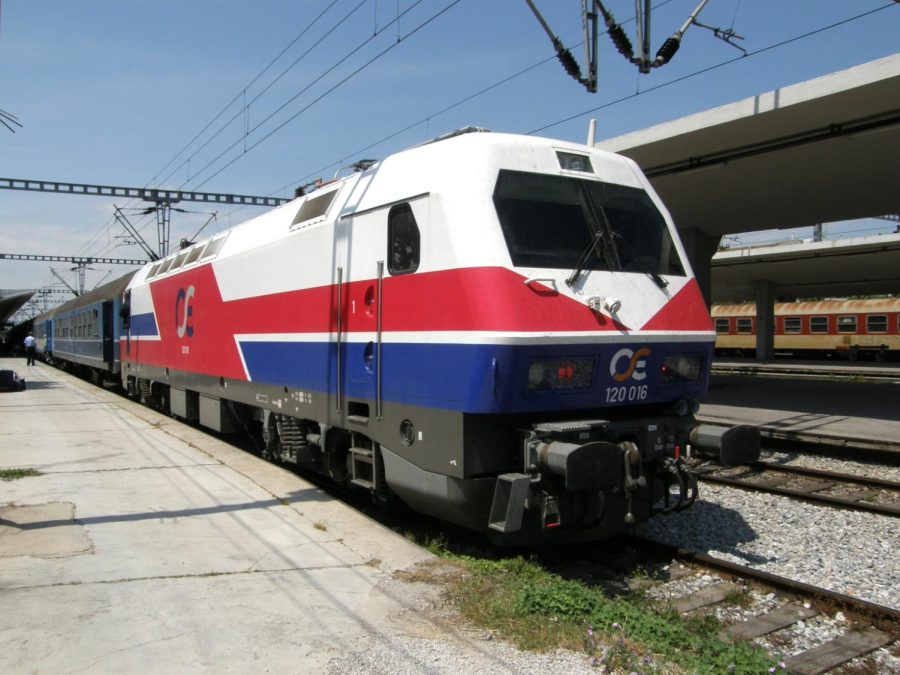Anger Continues to Grow in Greece As Details Emerge About Deadly Train Collision
March 5, 2023
At least 57 people were killed late last Tuesday when a head-on collision occurred between two trains in the Tempe Valley of central Greece.
The crash, which took place between a passenger train carrying 354 people and a freight train, occurred just before midnight on a trip from Athens to Thessaloniki, and left the metal cars toppled and burned. Officials reported that, following the first carnival holiday Greece has held in 4 years, many of the passengers were young people who had been celebrating. As of Thursday evening, rescue workers are still searching the wreckage for 10 passengers who are unaccounted for, and 48 remain hospitalized.
As more details have come out about the incident, backlash and anger has grown in Greece, and people have turned their attention to the cause of the crash. Though the collision had elements of human error, with a station manager in the nearby city of Larissa arrested on “causing mass deaths through negligence” and “causing grievous bodily harm through negligence” by Greek authorities, many have placed the majority of the blame on Greece’s outdated railway system.
Transportation Minister Kostas Karamanlis, who said that Greece’s railway system he inherited was not “not up to 21st-century standards” when he first took office, resigned immediately following the accident. “In these 3.5 years, we have made every effort to improve this reality.” he said in his resignation announcement. “Unfortunately, our efforts have not been sufficient to prevent such a bad incident.”
Much of the scrutiny has lain on the technological safety features of the railways. According to Kathimerini newspaper, an electronic signaling system- a common safety feature in Europe- had been installed but was not functioning, due to either damage or sabotage, and that restoration efforts had continuously been delayed since 2016.
In a 2022 report by the European Union Agency for Railways, it was stated that systems like the one above were “widely considered one of the most effective railway safety measures for reducing the risk of collisions between trains,” and that Greece was the only country in the European Union without such a safeguard in place.
In addition, the same report stated that Greece had the overall highest railway fatality of the 22 countries studied, as well as the 7th highest passenger fatality rate.
On Thursday, the national federation of railway employees held a day-long strike citing needs for “hiring permanent personnel, better training and, above all, modern safety technology,” demands which they said had always been disregarded.
Konstantinos Genidounias, the president of the Association of Greek Train Drivers told ERT, the state-owned network, that “nothing works,” including features like the traffic control system, central monitoring system, and even light signals. “If these worked the drivers would see the red light and the trains would have stopped safely, 500 to 1,000 meters from each other.”
“We have asked. Complained. Nothing works.”
“Everything is dependent on the human factor” and thus, he said, “We are on manual.”
According to information given to the media, the trains had been running on the same tracks for nearly 12 minutes prior to the accident, with no human or technological intervention to stop them.
The infrastructure issues predate Greece’s financial crisis that began in 2009, when the country was forced to take bailout loans from international and European creditors to stay afloat. However, the problems severely worsened during that time period. A review from PwC consulting firm reported that in the 10 year period following the beginning of the crisis, Greece ranked lowest among E.U. countries in the percentage of its GDP spent on infrastructure, “undermining” its quality; the result of harsh austerity measures put in place by the government. In addition, many of Greece’s infrastructure assets, including its railways, were sold off to private corporations as a way to recapitalize its banks.
Stefanos Pantzartzidis, the lawyer for the 59 year-old station manager arrested in connection with the crash said that his client partially followed existing procedure and that he could have been “possibly more careful, which he accepts and takes responsibility for” but that “there has been convergent negligence by many other factors.”
In a televised visit to the crash site Wednesday, Greek Prime Minister Kyriakos Mitsotakis said that the collision was “mainly” due to “tragic human error.”
Since the accident, backlash within Greece has continued to grow as many vigils and protests were held across the country throughout Wednesday. Protestors gathered outside of the Athens headquarters of Hellenic Train, the company which ran the passenger route, and clashed with police. Tear gas and flashbang grenades were used to disperse the crowd, who threw stones and lit fires in the streets.
Members of the Athens Student Union held a sign reading, “Our dead, their profits.”


